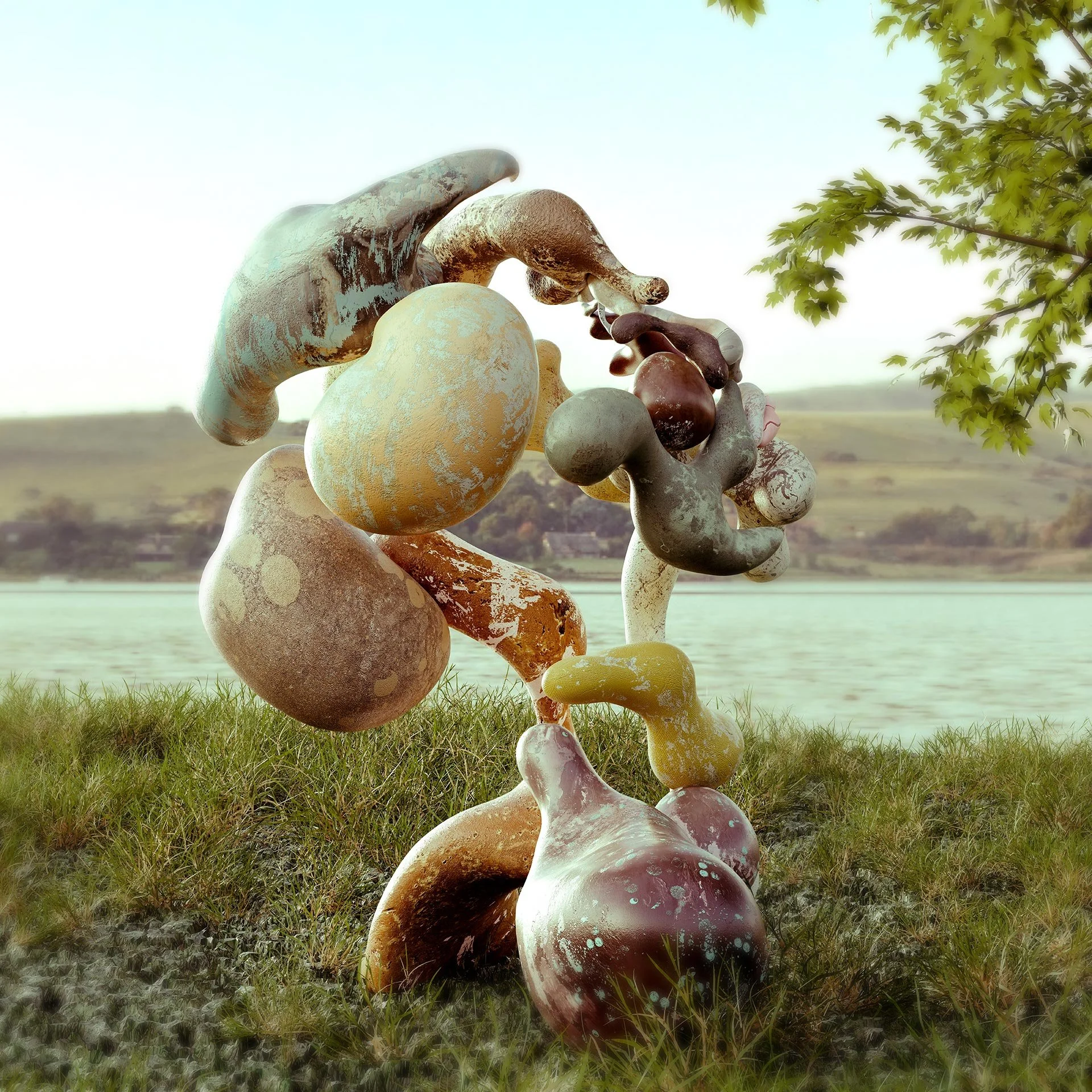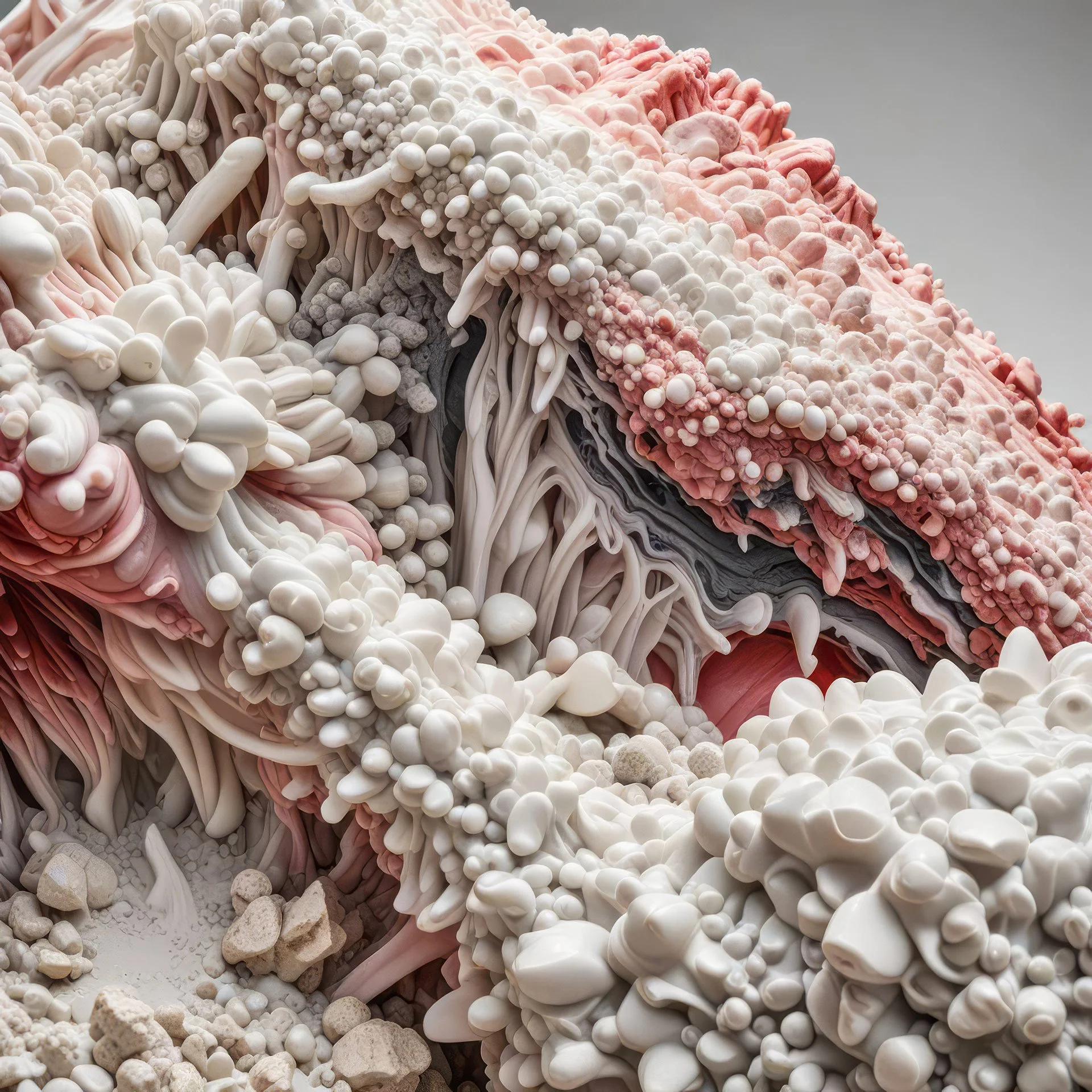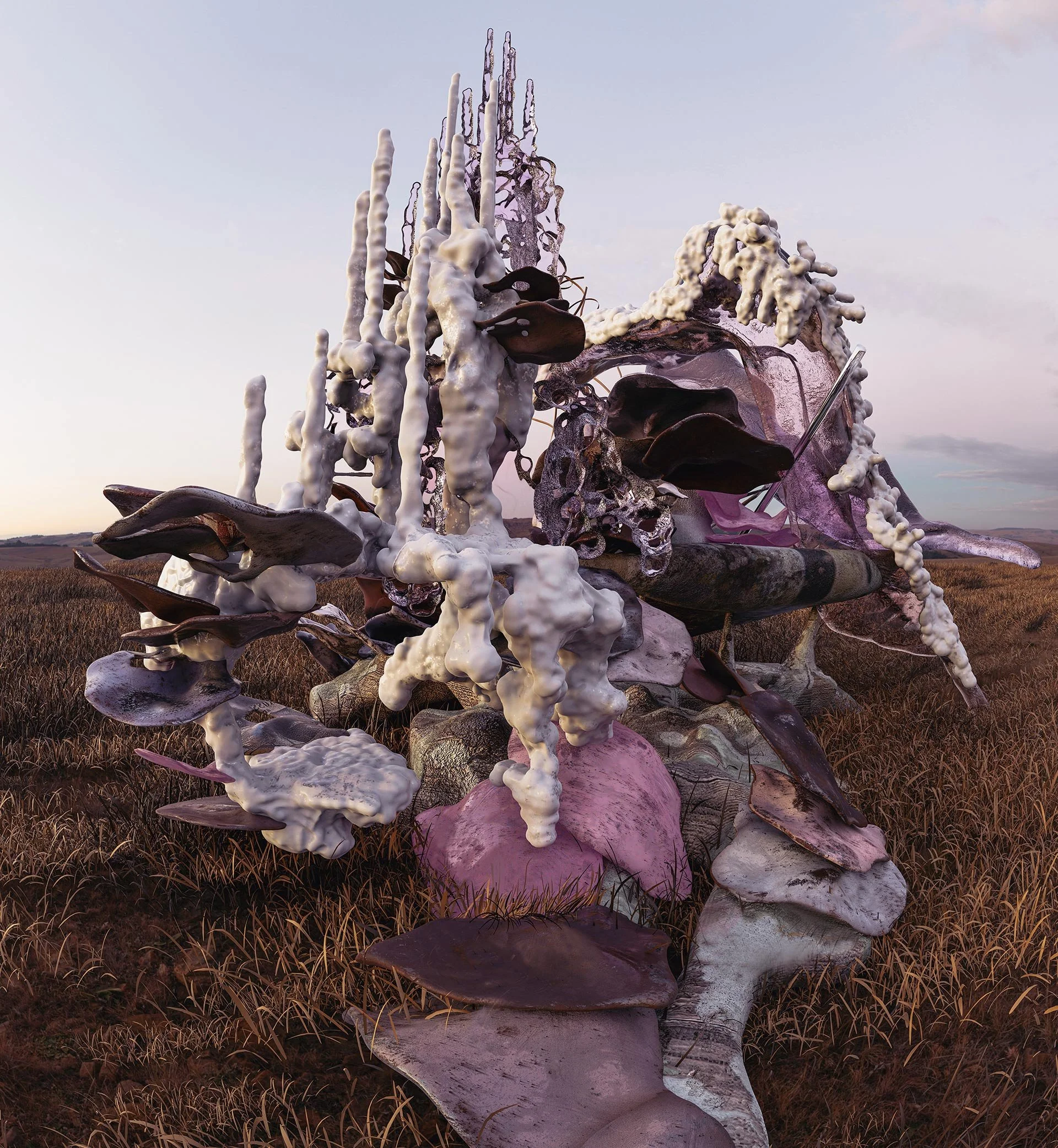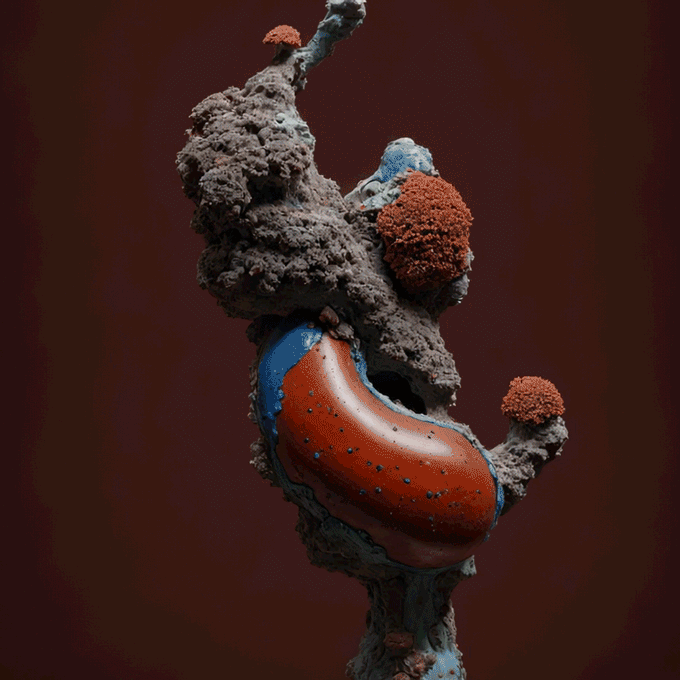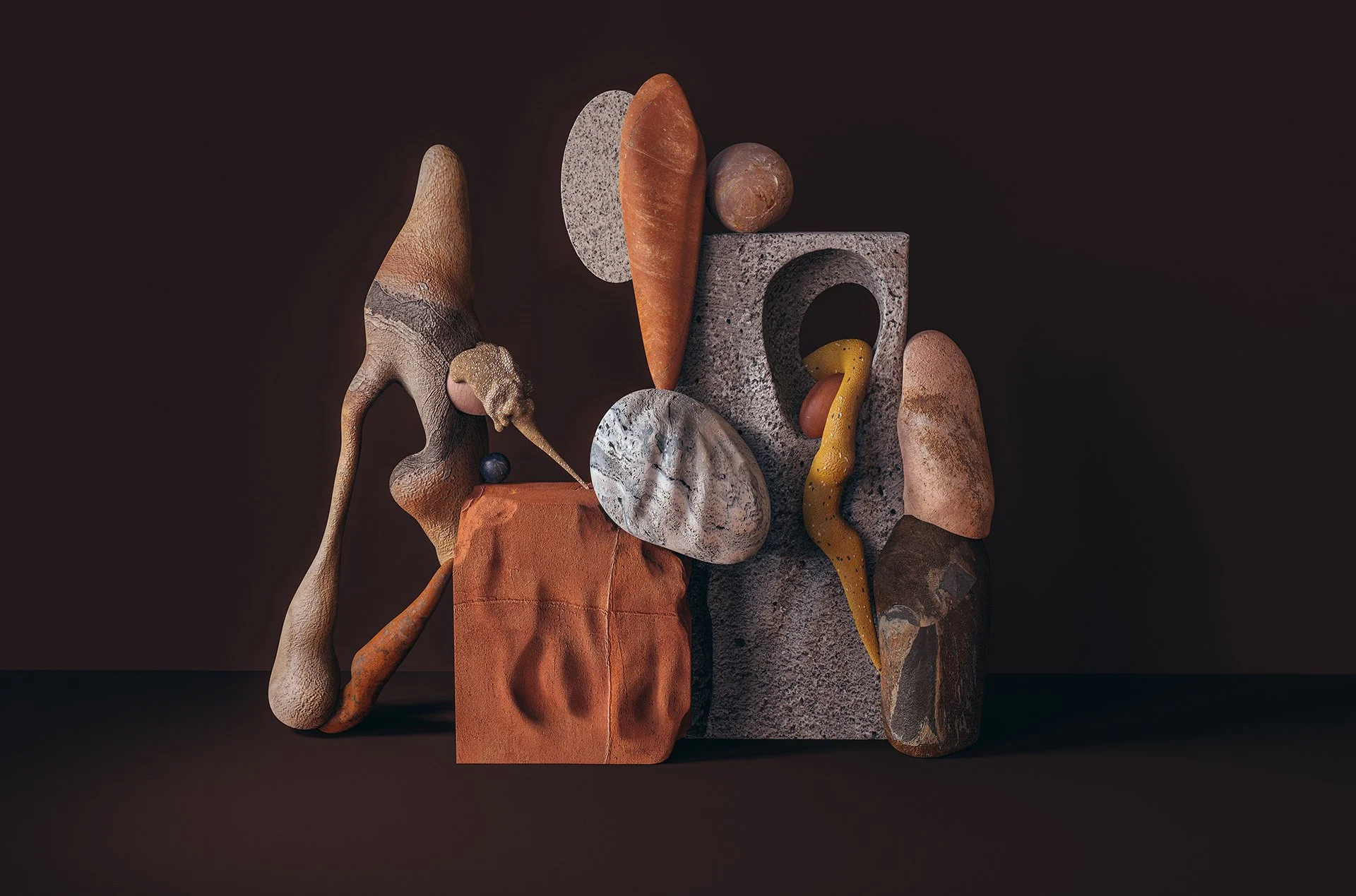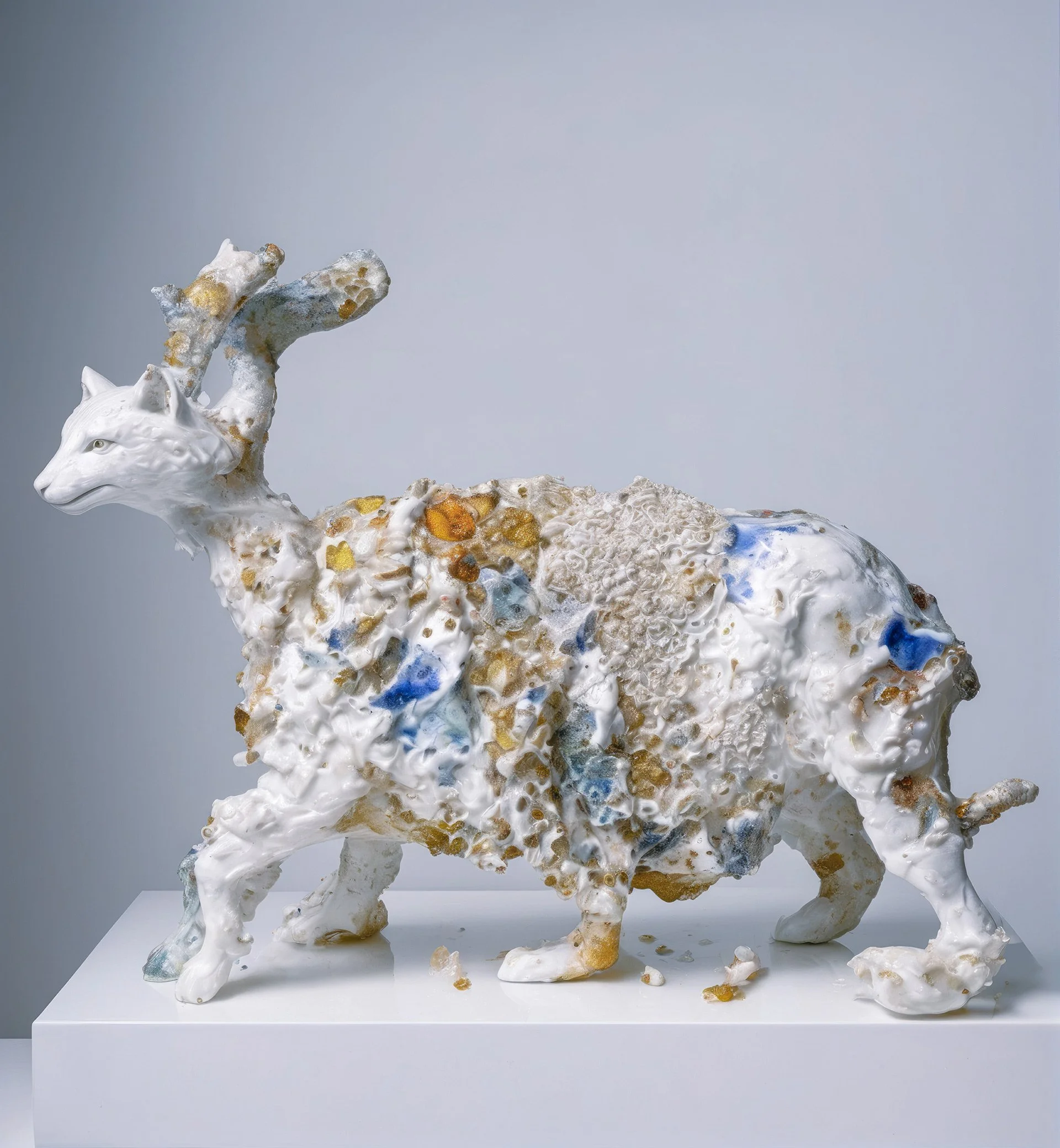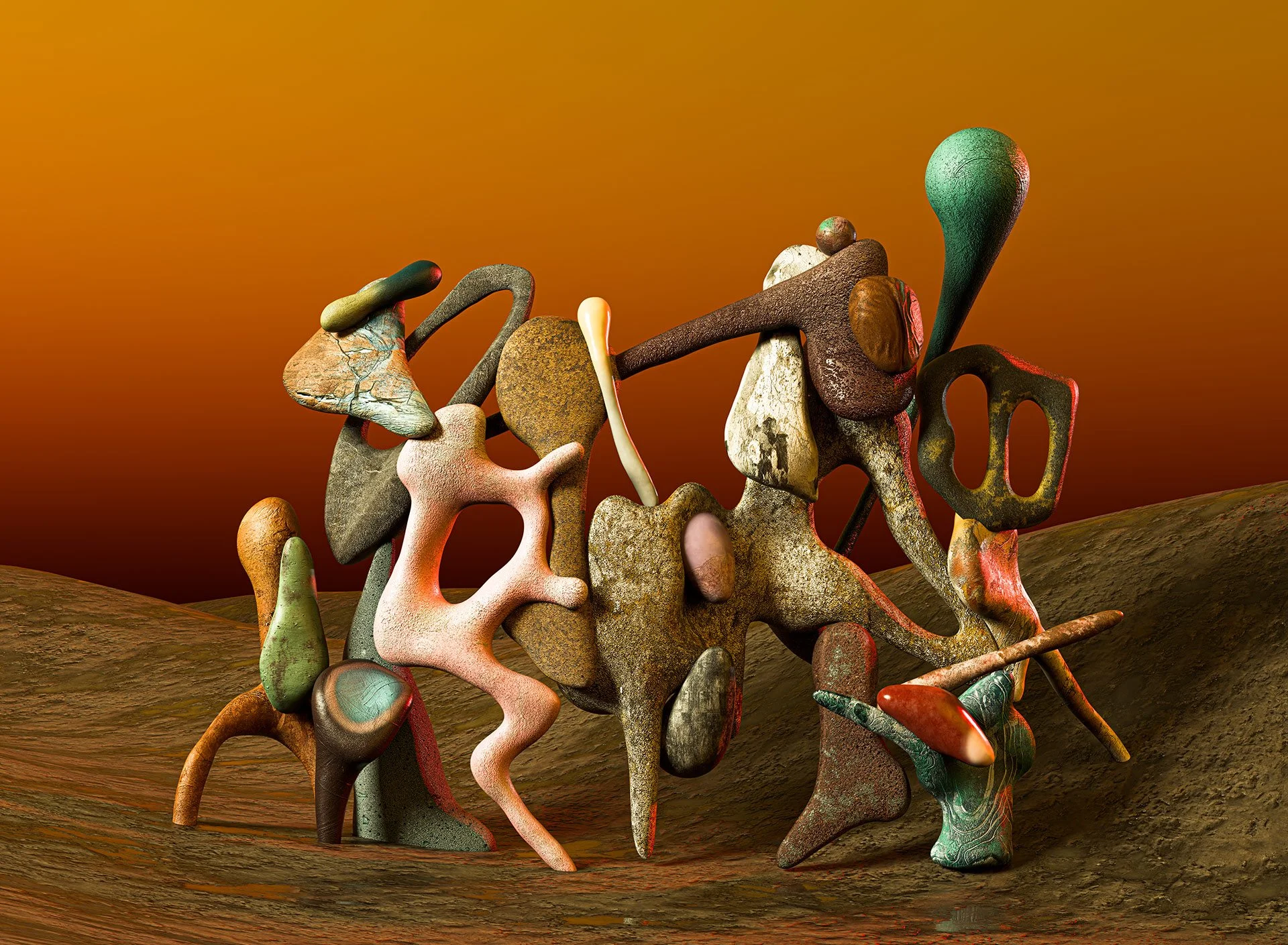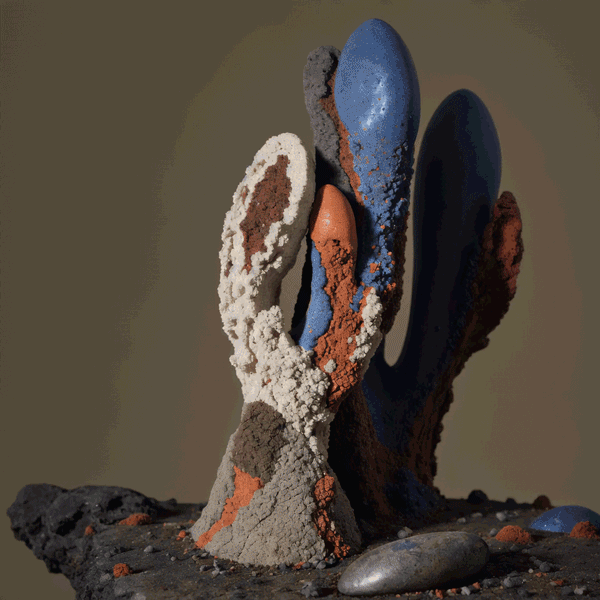From CGI to Ceramics: NastPlas on the Organic and Algorithmic
By Cansu Peker
NastPlas is the artistic duo of Fran Rodríguez Learte and Natalia Molinos García, based in Palencia, Spain. Known for their visually striking work that blends CGI, 3D, and AI, they’ve spent over two decades exploring the shifting boundaries between the digital and physical. Their practice centers on the intersection of art, science, and technology — often using visual experimentation to reflect on humanity’s evolving relationship with nature in the face of rapid technological advancement.
Their work fluidly moves between digital media and handcrafted techniques, creating pieces that challenge our understanding of materiality in a virtual world. Whether through imagery, animation, or sculpture, NastPlas engages with the future through both concept and craft. Their work has been exhibited in major institutions across the globe including CAFA Art Museum (Beijing), K11 Art Foundation (Hong Kong), and Untitled Gallery (Berlin) and they’ve collaborated with global brands like Apple, Nike, and Red Bull. In 2023, they were awarded the ADSW Global Digital Art Competition at COP28UAE.
We asked NastPlas about their art, creative process, and inspirations.
You've been creating together for over two decades. How has your artistic dialogue evolved over time?
Our collaboration has always been rooted in the tension and synergy between the digital and the physical. Over the years, our dialogue has shifted from viewing technology as a tool to embracing it as a co-author in the process. Initially, we focused on translating digital concepts into physical forms, but now the boundaries are more fluid. Sometimes the work remains purely digital, other times it becomes a hybrid object. The key to our evolution lies in questioning what "materiality" means in an increasingly virtual world.
What's your creative process like as a duo? Do you each take on different roles, or is it more of a fluid back and forth?
It's a continuous exchange. One might start with a technical experiment, a generative algorithm or a 3D scan, and the other might respond with a material intervention like ceramics. But the roles aren't fixed. Digital and physical layers emerge in parallel, and the work grows from that friction. We don't divide tasks. Instead, ideas collide to create something neither of us could predict.
You often work with organic textures. What do they represent in your work?
They're relics of the human hand in the digital age. Even when using 3D, AI or CGI, organic textures, cracks, flaws or uneven surfaces serve as reminders that nothing is perfectly rendered, neither in nature nor in code. They're metaphors for imperfection but also for adaptability: how a digital idea warps when materialized in clay or how a scanned physical texture transforms into something new.
You've worked with major brands like Apple and Nike, but also shown in museums around the world. How do you balance commercial and artistic projects?
Every project, whether for a brand or a cultural institution, stems from the same creative impulse and shares the same conceptual core. What changes is the context, not the content.
When collaborating with brands like Apple or Nike, we take a clear stance: we're not service providers but artists invited to reinterpret their visual language. These projects let us work with cutting-edge technologies and reach mass audiences while maintaining our artistic voice.
In museums, the same technological research unfolds with greater critical freedom, allowing us to question the cultural impact of those very tools. But the creative process is identical: we start with questions about materiality, perception, and the boundaries between physical and digital.
The balance lies in making no aesthetic or conceptual compromises, regardless of context. A piece for a brand must be as rigorous as a museum work, and vice versa. The key is preserving our artistic integrity while leveraging each platform's unique possibilities.
Ultimately, all these projects feed the same creative ecosystem. Technical solutions developed for an ad might inspire an installation months later, and research for exhibitions often finds unexpected applications in commercial work. It's a constant dialogue, not a division.
How do you imagine the role of the artist in shaping the future?
The contemporary artist must act as an agent of cultural transformation whose work transcends mere aesthetic production. Our practice exists at the intersection of technological innovation and humanistic reflection, creating critical spaces where future imaginaries are reconfigured.
Art uniquely embodies abstract concepts, turning technological developments into sensory experiences that invite collective dialogue. Beyond creating objects, we build platforms for thought that challenge paradigms and propose alternatives to established models. This approach lets us tackle complex issues from AI to ecological crises through poetic, accessible lenses.
Art's true value in shaping tomorrow lies in its power to articulate alternative narratives. Against dominant utilitarian discourses, artists can propose visions integrating the rational and emotional, the technological and organic. It's about creating not just for the future but from the future, anticipating its contradictions and possibilities with conceptual rigor and aesthetic sensitivity.
If someone is seeing your work for the first time, what do you hope they take away from it?
Our work aims to trigger deep questioning in the viewer. We hope the initial encounter sparks reflections on the boundaries between natural and artificial, tangible and virtual. The calculated ambiguity of our pieces functions as a conceptual device, inviting the audience to critically examine their own perceptions and preconceptions.
The true goal transcends the visual. We seek to provoke productive discomfort, a moment of cognitive doubt where viewers pause to reconsider how they interpret reality. Textures that deceive the touch, forms oscillating between organic and digital, materials contradicting their initial appearance all these elements form an artistic language designed to stimulate critical thinking.
Rather than offering conclusions, our work poses open questions about creation in the technological age. We want the audience to leave not with definitive answers but with new questions that resonate long after they've left the exhibition space. This reverberating quality, the ability to prolong reflection beyond the initial encounter, is our measure of artistic success.
What is a dream project you'd like to make one day?
Our fundamental aspiration transcends creating specific works to focus on dissolving hierarchies between digital and material mediums. We aim to establish a paradigm where the distinction between code and matter becomes irrelevant, where organic and algorithmic qualities emerge as equivalent expressions of the same creative language.
This vision would involve developing an aesthetic framework where technical precision and natural imperfection don't oppose but feed each other in continuous dialogue. Textures, forms and behaviors would simultaneously exhibit the logic of computational systems and the complexity of biological processes, with neither dominating.
The ideal project would create conditions for this synthesis to occur organically, generating experiences that defy established perceptual categories. It wouldn't just represent this fusion but make it operative in artistic practice, setting new parameters for creation in the post-digital age.
What else fills your time when you're not creating art?
When not in the studio, we dedicate time to activities that nourish our practice. Close observation of nature is a constant. We spend hours studying organic patterns, geological formations and light phenomena, meticulously documenting these findings for later influence.
Reading holds a special place in our routines, with particular admiration for authors like Chuck Palahniuk, whose transgressive narratives and critical view of contemporary society resonate with our artistic exploration. We're equally passionate about film, especially works that challenge visual storytelling and offer innovative perspectives on human-technology relationships.
Music is another passion, both as listeners and experimental creators. Rhythmic structures and sonic textures often inspire new directions in our visual work.
We deeply value time with our close circle of friends, including artists and researchers. These multidisciplinary conversations spark enriching exchanges that frequently lead to new ideas and collaborations.


